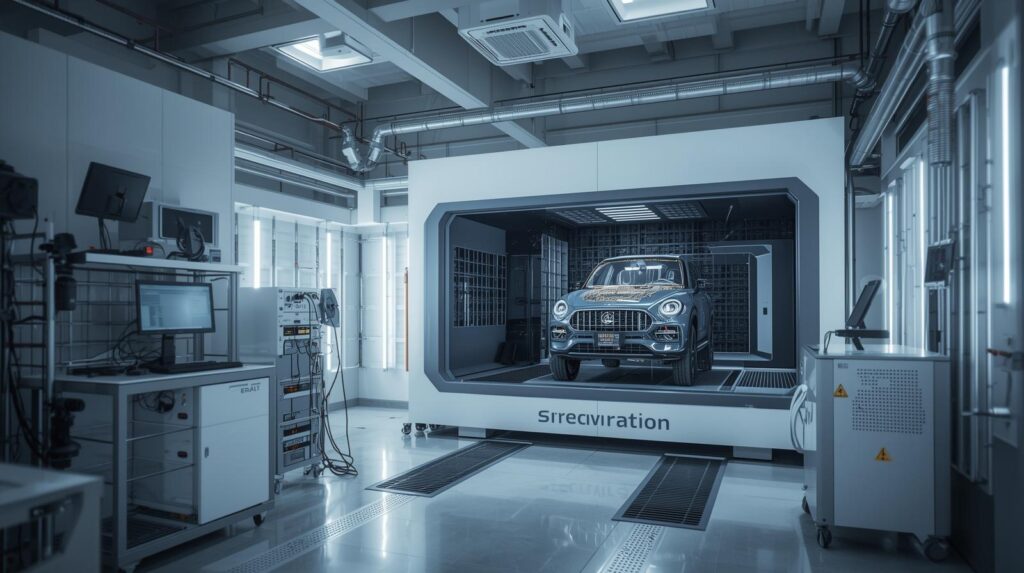Oct 17th, 2025 · Comments Off on Comprehensive Analysis of the NVH Testing Industry: Trends, Opportunities, and Forecast
The NVH testing industry, focused on measuring and mitigating noise, vibration, and harshness, has evolved from a niche engineering activity into a strategic capability for manufacturers across automotive, aerospace, industrial equipment, and consumer electronics sectors. Today NVH is not only about passenger comfort but also about product reliability, regulatory compliance, and competitive differentiation. This analysis examines the major trends shaping the industry, the opportunities companies can capture, and a forward-looking forecast for market development.
Download PDF Brochure @ https://www.marketsandmarkets.com/pdfdownloadNew.asp?id=47022073

Market drivers and structural shifts are redefining NVH testing priorities. The rise of electric vehicles has altered noise signatures and elevated the prominence of secondary noise sources such as tires, wind, and ancillary electronics. Lightweight materials and modular architectures in aerospace and automotive designs change vibration transmission paths, making traditional testing approaches less effective without complementary simulation methods. At the same time, stricter regulatory noise standards in many regions and heightened consumer expectations for quieter products reinforce ongoing demand for NVH services and solutions. These structural shifts push spending toward both earlier stage design validation and continuous in-service monitoring, expanding the addressable market beyond prototype labs to production lines and field-service ecosystems.
Technological innovation is the most visible and rapid trend in NVH testing. Advances in sensor technology, miniaturized accelerometers, microphone arrays, and high-fidelity data acquisition systems have increased the resolution and scope of measurable phenomena. Digital signal processing, frequency-domain analysis, and fast Fourier transform approaches have matured, while machine learning and pattern recognition now accelerate fault identification and root cause analysis. The integration of NVH data with simulation and virtual prototyping tools allows engineers to move from reactive testing to predictive design iterations. Cloud platforms and edge computing enable remote diagnostics, collaborative analysis, and the aggregation of large datasets for benchmarking and model training. Together, these technologies shorten development cycles and reduce the cost of iterative physical testing.
New delivery models and services are creating commercial opportunities for NVH vendors and consultancies. Rentable test rigs, portable measurement kits, and software-as-a-service models lower barriers for small and mid-sized manufacturers to access advanced NVH capabilities. Subscription models for analytics, anomaly detection, and predictive maintenance create recurring revenue streams and deepen long-term relationships between suppliers and customers. Certification and compliance testing remain steady revenue pillars, but value added services such as design consulting, simulation-validated testing, and long-term monitoring contracts are becoming increasingly important for margin expansion.
Cross-industry convergence is widening the use cases for NVH testing. In industrial machinery and energy sectors, NVH analysis is used to detect early signs of bearing wear, imbalance, and structural fatigue, enabling predictive maintenance and reducing unplanned downtime. Consumer electronics manufacturers apply NVH methods to improve product ergonomics and perceived quality. In aerospace, the push for passenger comfort combined with the need to validate new composite materials and propulsion systems sustains high-value NVH engagements. This cross-pollination increases total addressable demand and encourages solution providers to develop modular toolsets that work across multiple verticals.
Despite strong tailwinds, the NVH industry faces challenges. The heterogeneity of test environments complicates standardization. Data interoperability across different acquisition systems and vendor tools remains imperfect, slowing the adoption of unified analytics platforms. Skills shortages in acoustics, mechanical testing, and data science constrain some firms from fully exploiting advanced NVH capabilities. Additionally, as more testing moves to software and simulation, questions about model fidelity and the need for hybrid validation strategies complicate procurement decisions.
Opportunities for growth are substantial and can be pursued along several vectors. First, companies that combine high-quality hardware with analytics and domain expertise will win larger contracts and sustain higher margins. Second, developing standardized, easy-to-deploy portable solutions will unlock smaller OEMs and Tier 2 and Tier 3 suppliers as customers. Third, investing in AI-driven predictive models that can operate with smaller labeled datasets will meet industry demand for quicker insights without prohibitive data collection efforts. Fourth, expanding into services that tie NVH outcomes to business metrics such as warranty cost reduction, customer satisfaction, and energy efficiency will strengthen the value proposition for buyers.
The forecast for the NVH testing industry is one of steady expansion and increasing sophistication. Growth will be supported by the accelerating adoption of electric mobility, continued aerospace production, industrial automation investments, and consumer demand for higher perceived quality. Over the next five to seven years, expect a bifurcation where mature players offer integrated, cloud-enabled platforms with full lifecycle services while nimble specialists capture niche applications with portable testing, rapid deployment, and verticalized analytics. Consolidation is likely as software and analytics become differentiators, prompting acquisitions that fill capability gaps.
